Sabrent Rocket 4 Plus-Destroyer 2.0 Review - 64TB TLC at 28,000 MB/s
Sabrent's unparalleled "Destroyer" makes another appearance. Destroyer 2.0 is again loaded up with TLC flash - all 64TB of it!
Introduction & Drive Details
About a year ago, we took a close look at Sabrent's one of a kind Destroyer 32TB AIC SSD. This unique beast is the result of a collaborative effort between Sabrent and HighPoint Technologies delivering a 32TB storage device capable of an unprecedented 28,000 MB/s throughput and targeted directly at professional content creators.
Recently, as they always do, Sabrent upped the capacity game across the industry by bringing to market the world's first 8TB consumer NVMe SSD arrayed with TLC flash. The Rocket 4 Plus 8TB is a unique beast in its own right being the first time we've had a Phison E18 controller paired with BiCS 5 flash. This pairing is potent but not as potent as smaller capacity Rocket 4 Plus SSDs arrayed with Micron TLC.
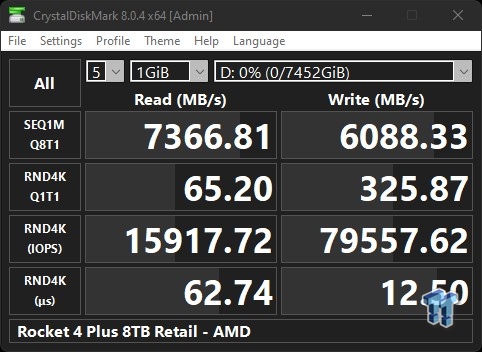
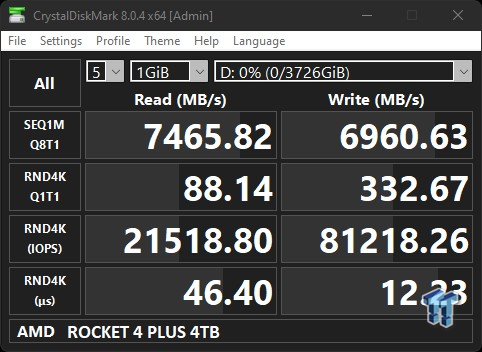
Most of the performance differential manifests when programming or writing to the drive. A quick look at sequential write speeds between the two capacity points illustrates this fact. Why? It comes down to die capacity. The 8TB Rocket 4 Plus is arrayed with flash packages composed of 1024Gbit flash, the 4TB model, 512Gbit die flash. Higher capacity dies simply take longer to program than equivalent lower capacity dies, hence the reduction in write or programming speeds.
Okay, so here we are once again with another Sabrent world exclusive featuring the world's most exotic and highest capacity consumer SSD, the Destroyer 2.0 64TB. The "Destroyer 2.0" is 64TB of PCIe Gen4 TLC storage. TLC is the key point here, not its 64TB RAW capacity, as Sabrent has previously done 64TB on one storage device with its QLC based 23,000 MB/s capable Battleship.
Like its siblings, Sabrent's Destroyer 2.0 is a highly specialized product not intended to be used as a typical consumer bootable storage device. It is intended for content creation applications where higher sequential throughput equals faster data processing. As such, this will be a standalone review without comparison products or charts. Additionally, the price of ownership, roughly $15k, is way outside what we consider to be in the consumer realm. We chose to test the Destroyer 2.0 on our high thread count AMD platform as we feel it best represents a workstation setting.
Drive Details
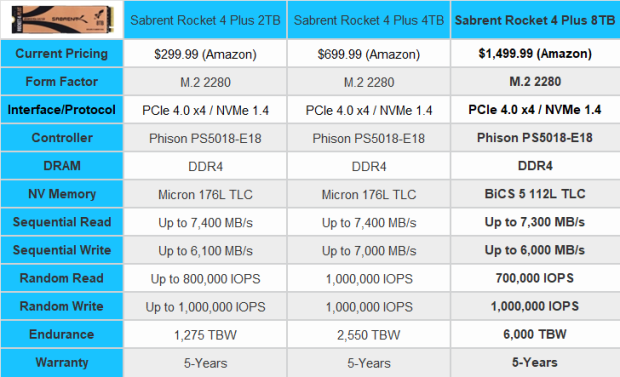
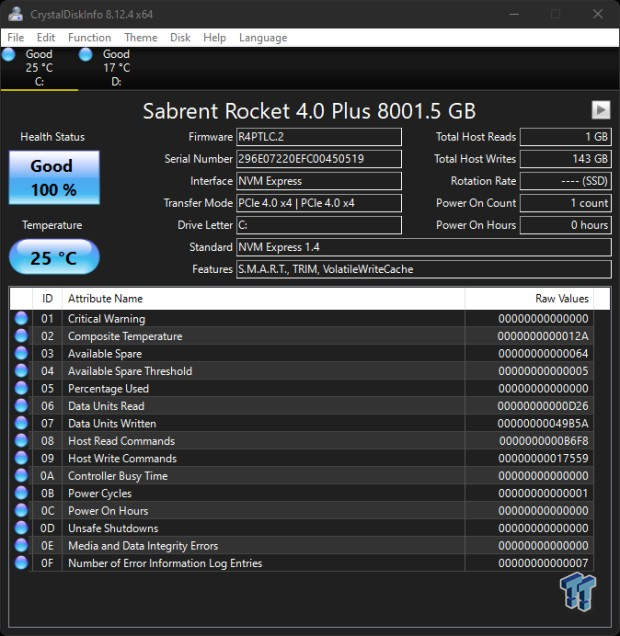
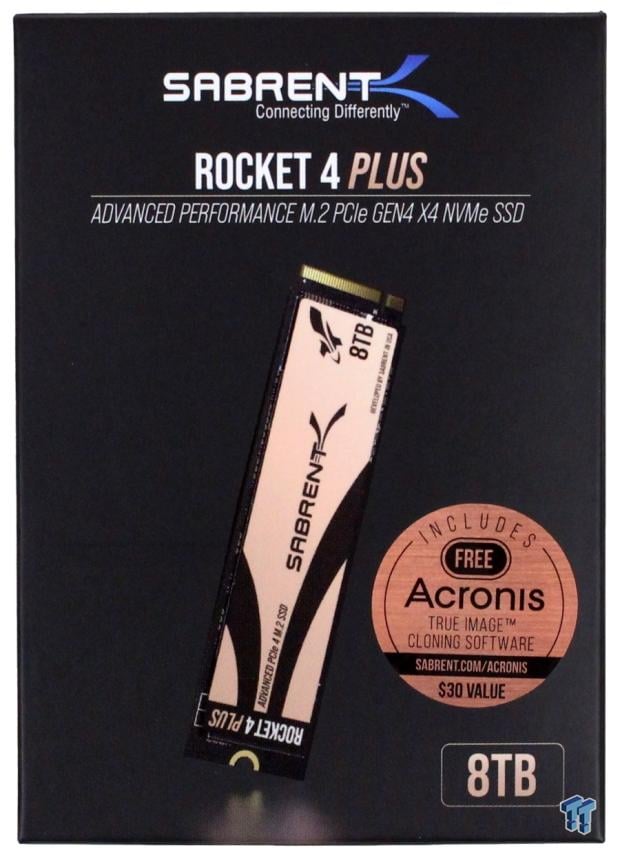
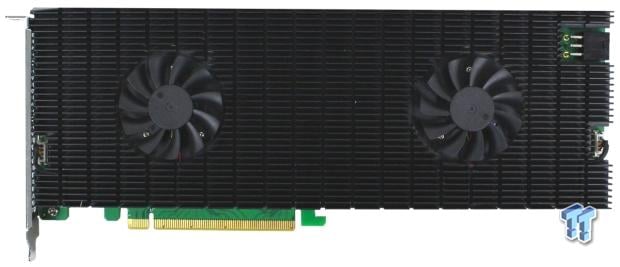
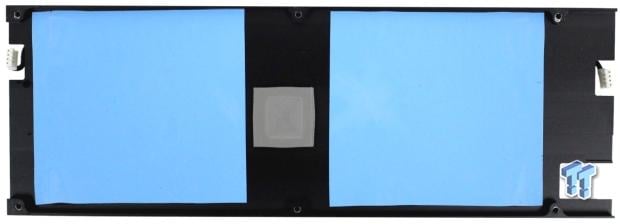
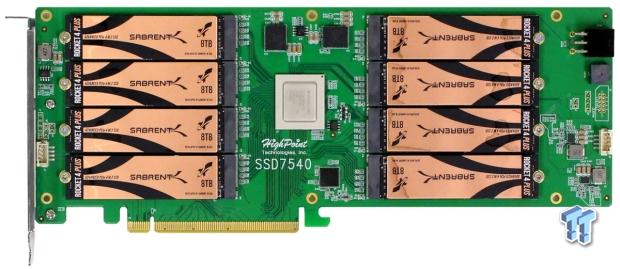
The Destroyer is built on a HighPoint SSD7540 PCIe Gen4 x16 RAID card featuring a Broadcom PCIe Gen4 8 series PEX switch managing eight onboard M.2 slots. The card requires additional power via a 6-pin VGA power cable. The SSDs are cooled by a heavy-duty solid aluminum heat sink with thermal pads and active cooling. This single slot card is about the length of a high-end graphics card.
Jon's AMD Test System Specifications
- Motherboard: ASUS ROG Crosshair Hero VIII Wi-Fi - Buy from Amazon
- CPU: AMD Ryzen 9 5900X - Buy from Amazon
- Cooler: Alphacool Eissturm Hurricane Copper 45 - Buy from Amazon
- RAM: Corsair Dominator Platinum RGB 32GB (2x16GB) DDR4 4000 - Buy from Amazon
- Video Card: GIGABYTE GeForce RTX 2070 WINDFORCE 8G - Buy from Amazon
- Case: PrimoChill's Praxis Wetbench - Buy from Amazon
- Power Supply: Corsair AX1000 - Buy from Amazon
- OS: Microsoft Windows 10 Pro 64-bit - Buy from Amazon

HighPoint RAID Management 2.17.4
HighPoint has a browser-based RAID utility to create and manage RAID arrays on its SSD7540 RAID card. This is what we used to create the powerful RAID 0 arrays we used for this review. The RAID tool works in conjunction with a HighPoint NVMe controller driver that needs to be installed before using the RAID tool. You can get the driver and tool here.
We will note that the Destroyer is bootable if desired, but we don't recommend it be used as a boot volume.
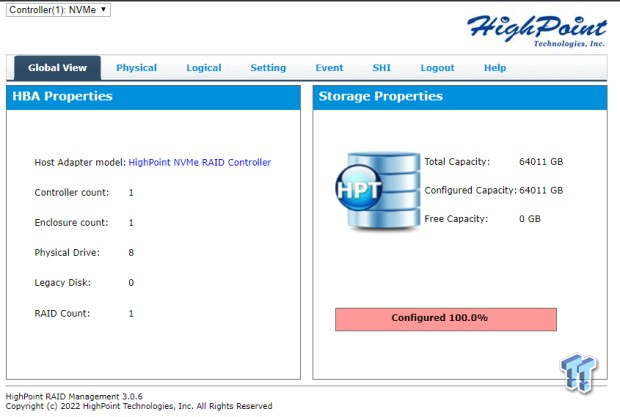
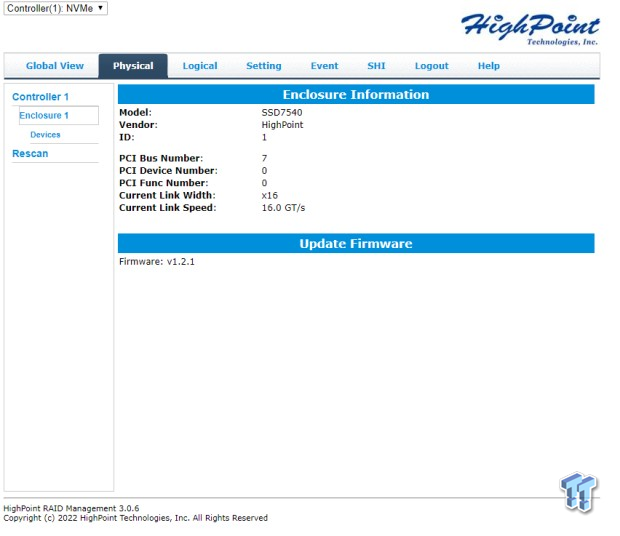
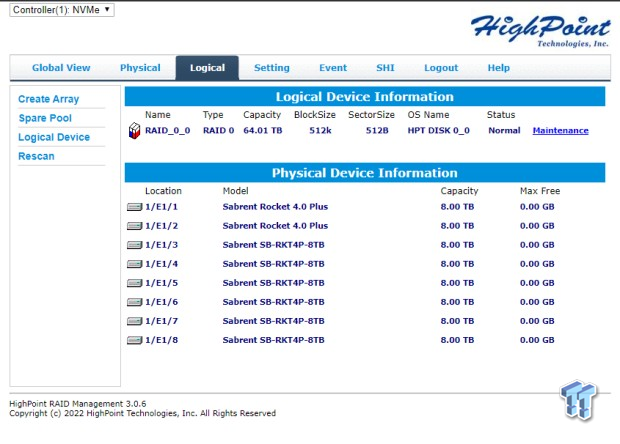
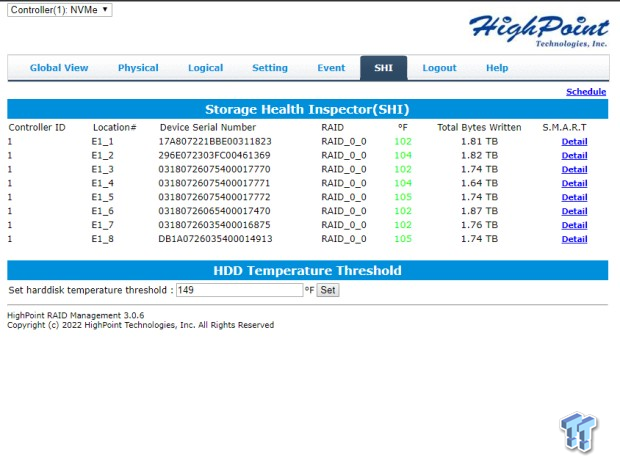
The Destroyer can be configured in various RAID configurations, including RAID 10. For this review, we choose RAID 0 with the default 512K block size as this will enable peak throughput. HighPoint's browser-based RAID tool is easy to use and works flawlessly. Our formatted RAID 0 volume yields 59,615 gigabytes available to the user.
Synthetic Benchmarks: CDM, Anvil, ATTO, Blackmagic, AJA
CrystalDiskMark
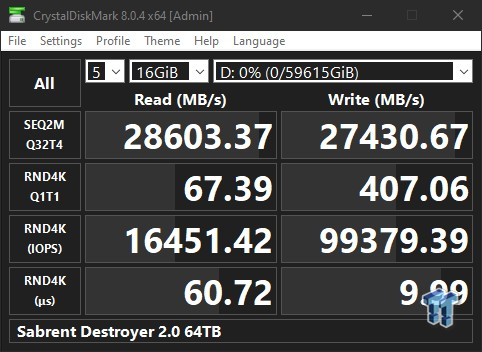
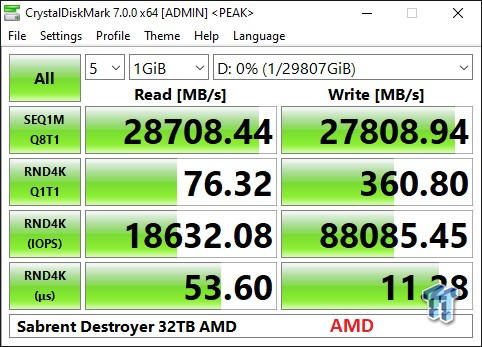
So, is the Destroyer 2.0 as fast as its original iteration considering its high-capacity die handicap? Surprisingly it's very close in terms of absolute throughput, but it requires significantly higher queue depths to get there when programming data. Serving data (read) to the host it is equivalent, being capable of more than 28,000 MB/s at SEQ1M Q8T1, same as before. However, considering the Destroyer 2.0 has more than double the endurance and twice the capacity of the original Destroyer, there is no question the 2.0 version is the new King of consumer SSDs.
Anvil's Storage Utilities
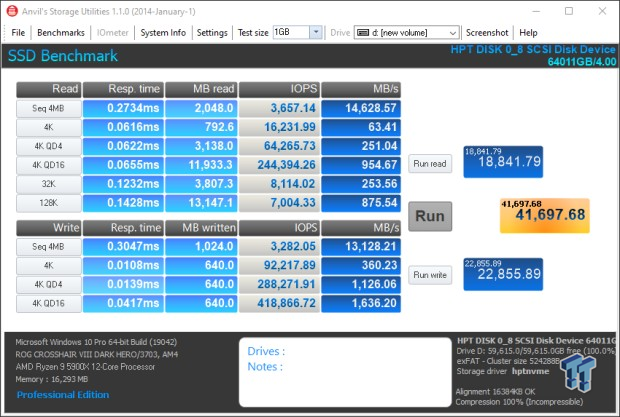
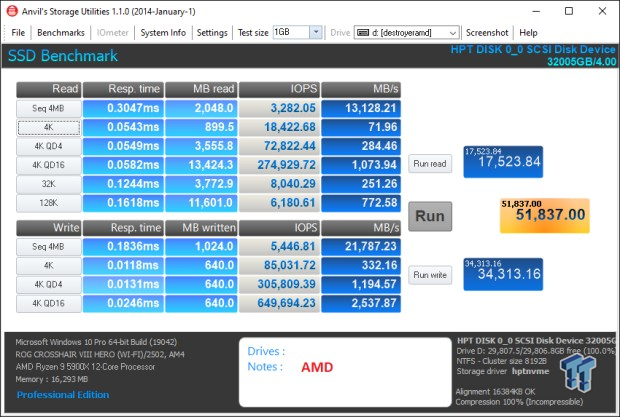
Here we have the Destroyer 2.0 beating the original Destroyer when reading sequential data. Impressive. Sequential write throughput is down by about one-third when queue depths are low.
ATTO
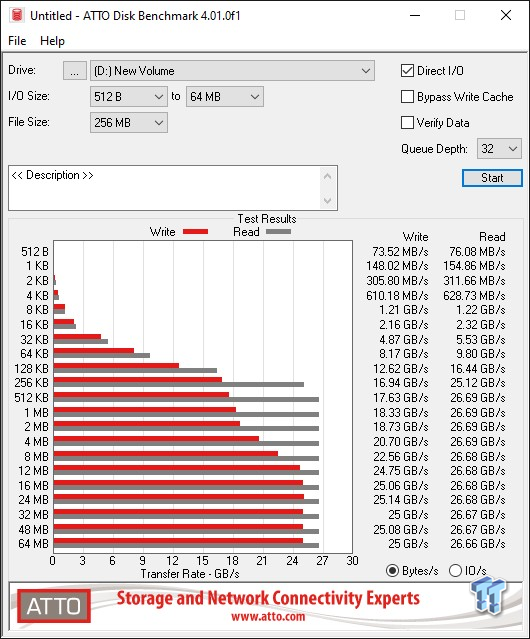
Here we cranked up the queue depth to 32 from its default of 4, and we get the destroyer 2.0 reading and writing data at speeds that exceed what the fastest DDR4 is capable of. Impressive.
Blackmagic
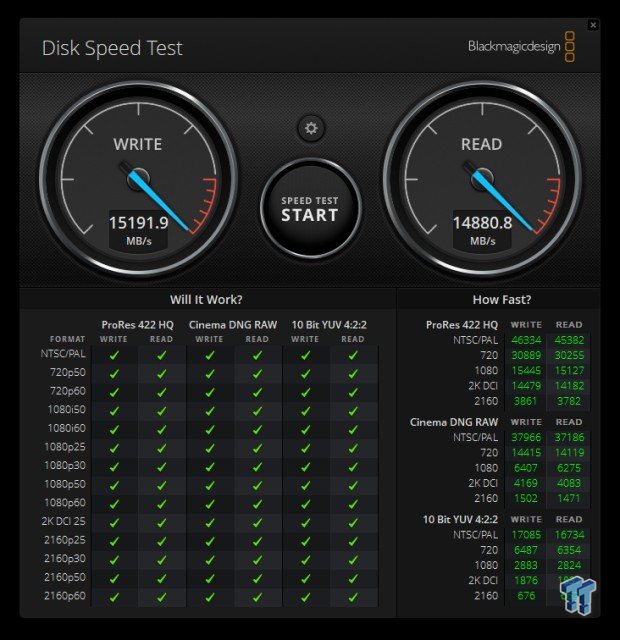
If tasked with video content creation, the Destroyer 2.0 can more than handle anything thrown its way.
AJA Disk Test
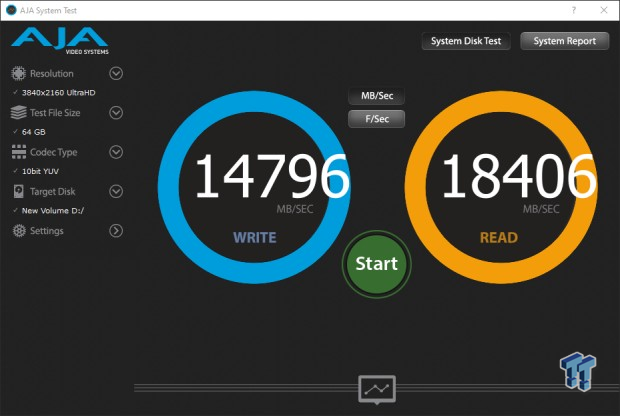
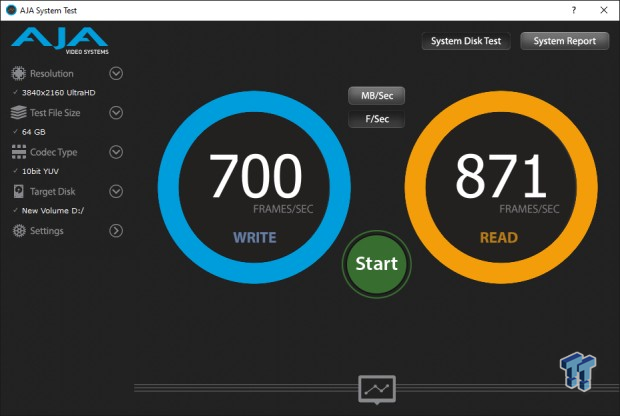
AJA tests with various video codecs of various file sizes. We chose 10bit 4K Ultra HD at a 64GB file size, showing both MB/s and FPS results. With results like this, it's no wonder Destroyer 2.0 is targeted for professional video processing applications.
Real-World Testing: Transfers, PCM10
Transfer Rates
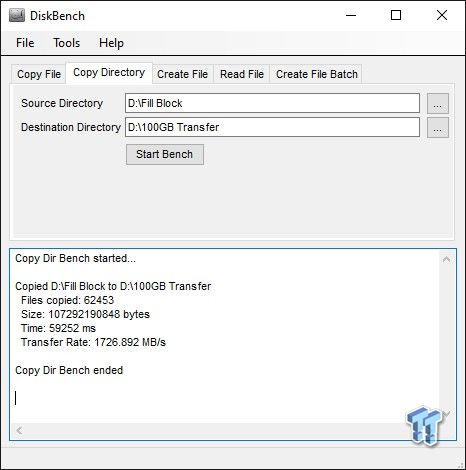
Our 100GB data transfer is composed of more than 62,000 files of random types of data, making it very hard to swallow for any storage device, especially a sequential specialist like the destroyer 2.0. Not the type of data the Destroyer 2.0 is targeted at. We just wanted to see how it would handle it. Surprisingly well, all things considered, as the new King is within 150MB/s of its predecessor.
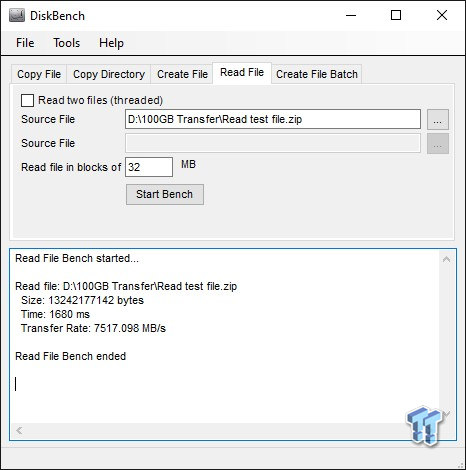
Our read transfer file is more to the Destroyer's liking because it is a single Zip file. At an eye-popping 7,500 MB/s, the Destroyer 2.0 sets a new lab record by besting its predecessor by close to 500 MB/s. Outstanding.
PCMark 10 Data Drive Benchmark
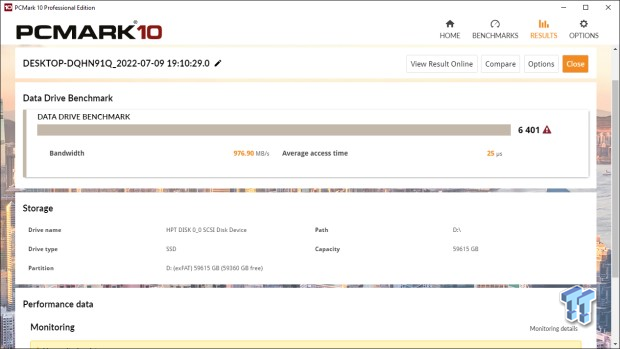
This test is again a bit outside the wheelhouse of what the Destroyer is intended for; however, it gives us some insight into how it would function as a typical consumer data drive. How does it do? It essentially ties its predecessor, delivering the second-best performance we've seen to date for a storage device run on our AMD platform.
Final Thoughts
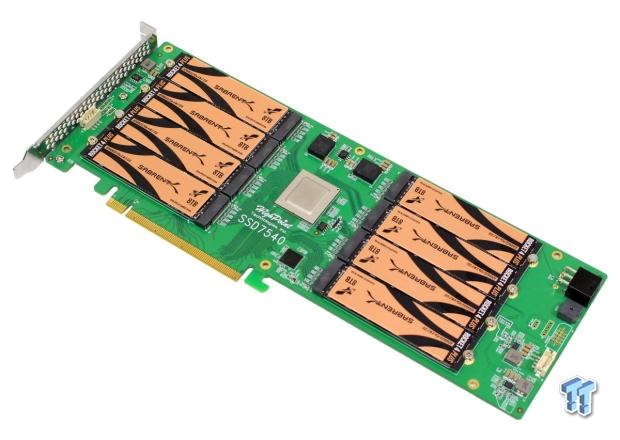
There is nothing else like it. Sabrent's Destroyer 2.0 is, without a doubt, the most extreme storage device we've ever laid our hands on. This is what Sabrent has brought to the solid-state storage industry. Sabrent pushes the envelope like no one else ever has. We love that about Sabrent. Just think about it. No one else has even done an 8TB consumer NVMe SSD, and that's old news for Sabrent. They've been doing them for two years now.
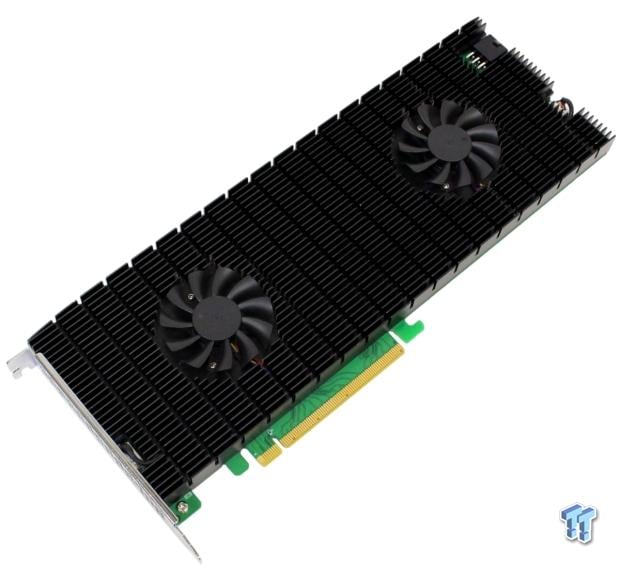
As we see it, Destroyer 2.0 is the pinnacle of consumer SSD achievement. Its specs alone prove it. 64TB of TLC flash capable of 28,000 MB/s throughput. Of course, the Destroyer 2.0 isn't for the common consumer, and it won't run common consumer workloads any better than a single SSD.
However, if you are a high-volume content creator, Destroyer 2.0 is the Holy Grail of storage devices, enabling record levels of efficiency that equals more profit for your business.

Performance | 99% |
Quality | 99% |
Features | 99% |
Value | N/A |
Overall | 99% |
The Bottom Line
64TB of 28,000 MB/s throughput. Enough said!

Similar Content
Related Tags
![Intel shelves Raja Koduri, out of the GPU unit, back to Chief Architect position Intel shelves Raja Koduri, out of the GPU unit, back to Chief Architect position]() Intel shelves Raja Koduri, out of the GPU unit, back to Chief Architect position
Intel shelves Raja Koduri, out of the GPU unit, back to Chief Architect position![Atari hardware revenues down 91% as VCS console significantly underperforms Atari hardware revenues down 91% as VCS console significantly underperforms]() Atari hardware revenues down 91% as VCS console significantly underperforms
Atari hardware revenues down 91% as VCS console significantly underperforms![NVIDIA's purported next-gen TITAN RTX renders: quad-slot GPU, dual 16-pin power NVIDIA's purported next-gen TITAN RTX renders: quad-slot GPU, dual 16-pin power]() NVIDIA's purported next-gen TITAN RTX renders: quad-slot GPU, dual 16-pin power
NVIDIA's purported next-gen TITAN RTX renders: quad-slot GPU, dual 16-pin power![PlayStation's Jim Ryan isn't worried about Xbox Game Pass, but he should be PlayStation's Jim Ryan isn't worried about Xbox Game Pass, but he should be]() PlayStation's Jim Ryan isn't worried about Xbox Game Pass, but he should be
PlayStation's Jim Ryan isn't worried about Xbox Game Pass, but he should be![Final Fantasy 16 will flex the PlayStation 5's power, Yoshi-P says Final Fantasy 16 will flex the PlayStation 5's power, Yoshi-P says]() Final Fantasy 16 will flex the PlayStation 5's power, Yoshi-P says
Final Fantasy 16 will flex the PlayStation 5's power, Yoshi-P says
![TeamGroup T-Create Classic DL 1TB SSD Review - Stalwart DRAMless TeamGroup T-Create Classic DL 1TB SSD Review - Stalwart DRAMless]() TeamGroup T-Create Classic DL 1TB SSD Review - Stalwart DRAMless
TeamGroup T-Create Classic DL 1TB SSD Review - Stalwart DRAMless![Acer Predator GM7000 4TB SSD Review - 4TB of Elite Performance Acer Predator GM7000 4TB SSD Review - 4TB of Elite Performance]() Acer Predator GM7000 4TB SSD Review - 4TB of Elite Performance
Acer Predator GM7000 4TB SSD Review - 4TB of Elite Performance![Cooler Master XG850 Plus Platinum PSU Review Cooler Master XG850 Plus Platinum PSU Review]() Cooler Master XG850 Plus Platinum PSU Review
Cooler Master XG850 Plus Platinum PSU Review![SteelSeries Apex 9 Mini Gaming Keyboard Review SteelSeries Apex 9 Mini Gaming Keyboard Review]() SteelSeries Apex 9 Mini Gaming Keyboard Review
SteelSeries Apex 9 Mini Gaming Keyboard Review![PCCooler GAMEICE CPU Air Coolers (K4, K6, and G6) Review PCCooler GAMEICE CPU Air Coolers (K4, K6, and G6) Review]() PCCooler GAMEICE CPU Air Coolers (K4, K6, and G6) Review
PCCooler GAMEICE CPU Air Coolers (K4, K6, and G6) Review
![Silicon Motion SM2267XT DRAMless Laptop SSD Preview - Speed and Efficiency Silicon Motion SM2267XT DRAMless Laptop SSD Preview - Speed and Efficiency]() Silicon Motion SM2267XT DRAMless Laptop SSD Preview - Speed and Efficiency
Silicon Motion SM2267XT DRAMless Laptop SSD Preview - Speed and Efficiency![NVIDIA GeForce RTX 4080 Unboxed: FE, ASUS, MSI and ZOTAC NVIDIA GeForce RTX 4080 Unboxed: FE, ASUS, MSI and ZOTAC]() NVIDIA GeForce RTX 4080 Unboxed: FE, ASUS, MSI and ZOTAC
NVIDIA GeForce RTX 4080 Unboxed: FE, ASUS, MSI and ZOTAC![NVIDIA GeForce RTX 4090 OC Shootout: ASUS, COLORFUL, FE, MSI, GAINWARD NVIDIA GeForce RTX 4090 OC Shootout: ASUS, COLORFUL, FE, MSI, GAINWARD]() NVIDIA GeForce RTX 4090 OC Shootout: ASUS, COLORFUL, FE, MSI, GAINWARD
NVIDIA GeForce RTX 4090 OC Shootout: ASUS, COLORFUL, FE, MSI, GAINWARD![NVIDIA GeForce RTX 4090 Unboxed: FE, ASUS ROG Strix, MSI SUPRIM LIQUID NVIDIA GeForce RTX 4090 Unboxed: FE, ASUS ROG Strix, MSI SUPRIM LIQUID]() NVIDIA GeForce RTX 4090 Unboxed: FE, ASUS ROG Strix, MSI SUPRIM LIQUID
NVIDIA GeForce RTX 4090 Unboxed: FE, ASUS ROG Strix, MSI SUPRIM LIQUID![Storage Showdown - Intel Alder Lake vs. AMD Zen 4 Storage Showdown - Intel Alder Lake vs. AMD Zen 4]() Storage Showdown - Intel Alder Lake vs. AMD Zen 4
Storage Showdown - Intel Alder Lake vs. AMD Zen 4


